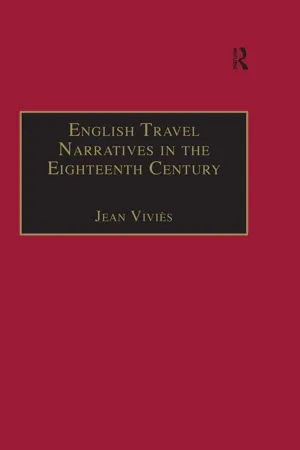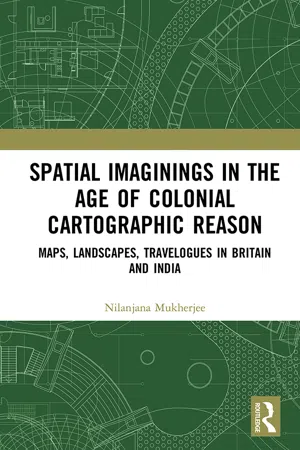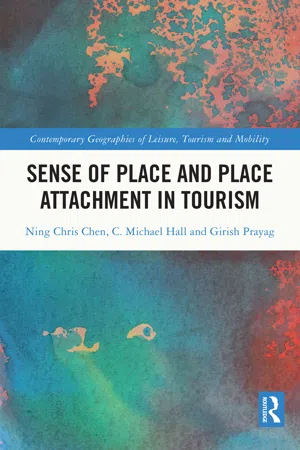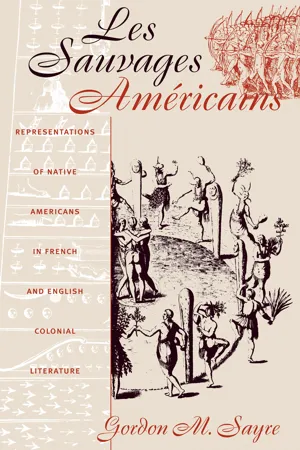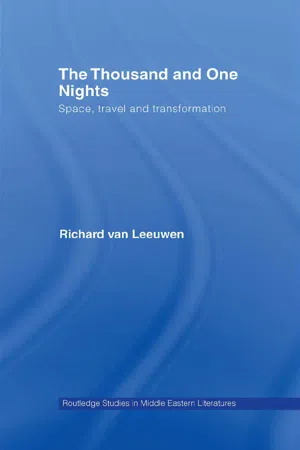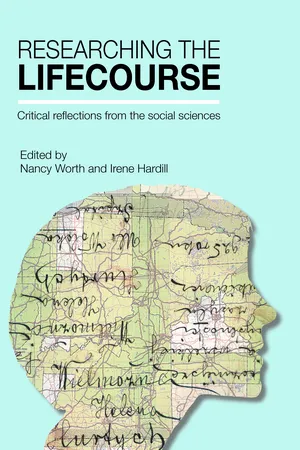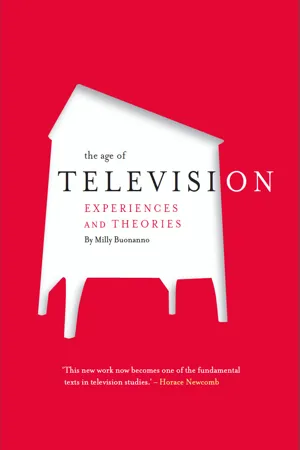Geography
Travel Narratives
Travel narratives are accounts of journeys and experiences in different geographical locations. They often provide insights into the cultural, social, and environmental aspects of the places visited. These narratives can be in the form of written texts, visual representations, or digital media, and they play a significant role in shaping perceptions and understanding of diverse landscapes and people.
Written by Perlego with AI-assistance
Related key terms
Related key terms
1 of 4
Related key terms
1 of 3
7 Key excerpts on "Travel Narratives"
- eBook - ePub
English Travel Narratives in the Eighteenth Century
Exploring Genres
- Jean Viviès(Author)
- 2017(Publication Date)
- Routledge(Publisher)
Conclusion The Travel Narrative and Literary CriticismAll narratives are Travel Narratives.1 Michel de CerteauThe study of Travel Narratives reveals the lack of grounding theory and analytical tools. Narratology has been mostly interested in fictional narratives. In a recent essay, Gérard Genette acknowledged that, while narratological analysis has underlined narrative modalities at work in all discourse, their application to factual texts is not necessarily straightforward.2 The reason for this is doubtless that the travel narrative has often been seen essentially as a document (informing us about reality) or as a fragment of an autobiography (informing us about its author). Its status as a literary artefact is rarely brought to the forefront.The generic status of the travel journal in relation to the fictional narrative
Travel Narratives are more capable of hindering analysis than they are able to further it, and this is especially true of typology. It is revealing that Percy G. Adams brings his study to a close by attempting to define the travel narrative in terms of negative criteria. He tries to give an empirical account, dismissing a whole series of inadequate definitions. These definitions cover a number and a variety of notions, amongst which are the type of narrative voice, the simplicity of the subject matter, the objectivity and the quality of the account. It is worthwhile lingering a moment over each before we attempt to take the matter further.The travel narrative is not necessarily an account or journal written in the first person. Indeed, a random cross-section indicates that the third person is often used. In Boswell's An Account of Corsica, for instance, much space is given to Paoli's acts and gestures, his maxims and his opinions.The texts are not necessarily in prose. There are poetical travel journals or texts illustrated with numerous etchings. Adams does not offer any English examples but evokes the astronomer Jérôme Lalande's Journal d'un voyage en Angleterre (1763), the text of which is indeed illustrated by drawings and maps.3 The travel narrative is not necessarily a simple or linear tale in contrast to the complexities of plot associated with the novel. The example of Defoe is eloquent in this case, for the complex, narrative engineering of Tour thro' England and Wales - eBook - ePub
Spatial Imaginings in the Age of Colonial Cartographic Reason
Maps, Landscapes, Travelogues in Britain and India
- Nilanjana Mukherjee(Author)
- 2020(Publication Date)
- Routledge India(Publisher)
5Place and identity
Travel Narratives in the making of Britain
No place, not even a wild place, is a place until it has had that human attention that at its highest reach we call poetry.The Sense of Place , Wallace Stegner1An entry in the Penny Magazine , brought out by the Society for the Diffusion of Useful Knowledge, dated 16 June 1832, states:Everyone says that geography is one of the most useful things that can be learnt; yet nothing is learnt so ill, because nothing is taught so ill. Look into any of the elementary books of geography, and read what is said about England. First, we are told that it is divided into forty counties, then perhaps follows an account of the several law circuits and then after some short notices about religion, government, produce and manufactures, there are given lists of the chief towns, mountains, rivers and lakes. But all these things are given without any connexion with each other, and it is a mere matter of memory to recollect what is no more than a string of names. And if a man thus recollects them, still he is not much the wiser for them; he has got no clear and instructive notions about the country, but has merely learnt his map, and knows where to find certain names and lines upon it.2Clearly then, there was another way of doing geography, and that had to be one which drew connections between names and the physical terrains of the regions identified, and between the “hills” and the “rivers”.3 Narrative recounting of travels in those regions could secure the required connections and give a voice to the map. This chapter will try to find out how literature (especially of travel) is used for cartographic goals: to control, order or limn a place. In instituting an analogy between the discipline of geography and the art of writing, literature of travel pinpoints location and ushers untrammelled places into recognition by orienting them according to a coordinate system that unifies the globe. Whereas the study of cartographic procedures of mapping reveals processes of control of land and technologies of governmentality, symbolic representation of landscapes in literature can deal with land as perceived and experienced adding dimensions to the scaled down replica of regions. One would tend to believe that what is missing in planimetric maps, would likely be captured in such space–time based narrative strategies, such as socio-economic structures, emotions, tastes, smells and noises. “Literary geography” which has recently emerged as a critical method can prove to be quite helpful in understanding travelogues as rupturing the cartographic synchrony.4 - eBook - ePub
- Ning Chris Chen, C. Michael Hall, Girish Prayag(Authors)
- 2021(Publication Date)
- Routledge(Publisher)
In a world in which there is an expanding supply of tourism products all claiming to be unique but which often replicates others, stories and narratives can potentially become a unique selling proposition for many destinations (Bryon, 2012). Stories in tourism engage emotions (Lundqvist, Liljander, Gummerus, & Van Riel, 2013); convey facts and information; enrich, enhance, and infuse facts with meanings (Gabriel, 2000); and thus can attract and maintain people’s attention based on their entertainment value (Baumeister & Newman, 1994). Narratives and storytelling are essential to fostering a sense of place in a tourism context for five key reasons.- Narratives and storytelling play a key role in the social construction of place (i.e. tourism destinations);
- Tourism is experience-based industry, and thus narratives and storytelling often work closely with physical goods and services in order to create a cohort tourist experience;
- Tourism narratives are usually associated with particular memories, customs, values, and stories, in which tourists can relate themselves to;
- Through tourism narratives and storytelling, tourists can be personally involved and further participate in co-creation of their experiences; and
- Narratives and storytelling seamlessly link facts with fictions, enabling a holistic and congruous information exchange for tourism destinations.
Places are socially constructed into tourism destinations, and narratives play an important part in this process. Via the value-laden, emotion-conferring collective narrative constructions of place, tourism place imaginaries are created (Chronis, 2012). Tourism imaginaries can be theorised ‘on four experiential domains: narrative, more valuation, emplaced enactment, and emotional connection’ (Chronis, 2012, p. 1797), and narrative is one of the most widely employed discursive devices (Stokowski, 2002). From a learning perspective, one of the most effective ways to know a place is through learning its stories. The notion that tourism experiences relying on the availability and communication of place stories is long established in the tourism literature (Arnould & Price, 1993; Johnstone, 1990). In a way, tourism can be seen as entirely about storytelling (Chronis, 2005, 2008). From a place planning or destination marketing point of view, the meanings of a place are often communicated through marketing materials such as advertisements, commercials, travel books, brochures, and social media (Breek et al. 2018; Coghlan, McLennan, & Moyle, 2017; Young, 1999). On many occasions, the image of a particular destination is largely created on the basis of these marketing materials, rather than other literature and narrative formats, by people who are not familiar with the place, leading to a pure touristic sense of place. Therefore, in one sense, selling a tourism destination is an effort to develop specific place narratives that appeal to different markets (Chronis, 2012). - eBook - ePub
Les Sauvages Américains
Representations of Native Americans in French and English Colonial Literature
- Gordon M. Sayre(Author)
- 2000(Publication Date)
- The University of North Carolina Press(Publisher)
Second, a spatially linear and continuous narrative induces an isomorphic relation between traveler and landscape. If the continuity of the route is preserved in its description, later travelers and mapmakers will have no difficulty fitting the explorer’s account into the previous images of the world, and there will be no gaps where the narrator might jump into an imaginary or utopian setting. And third, the traveler is the narrator is the author of the account, and this focus ensures the independence of his subjectivity and protects against challenges to his veracity or to his freedom of movement and interpretation of phenomena. How are these criteria established and maintained? The first is established through codes that mark the act of writing as contained within the linear time of the narrative. Writing becomes an episodic routine alongside other routines of travel, and the discourse is produced in temporal (and spatial) proximity to the things described. Chronology can thereby easily organize diverse phenomena. As William Dampier explained in introducing his A New Voyage Round the World (1697), one of the most popular English Travel Narratives of its time and one inspirational to Defoe, who adapted it into a novel by the same title, his narrative “is composed of a mixt Relation of Places and Actions, in the same order of time in which they occurred: for which end I kept a Journal of every days Observations” (3). John Lawson entitled one section of his book “Journal of a Thousand Miles Travel among the Indians, from South to North Carolina” and reported on every day from December 28, 1700, to February 23, 1701. The journal or diary is an ostensibly private form of writing, a reflexive narrative. The information is not addressed to a reader but simply stored away for future reference. It therefore maximizes verisimilitude because the writer has no reason to fabricate; he has no one to fool but himself - eBook - ePub
The Thousand and One Nights
Space, Travel and Transformation
- Richard van Leeuwen(Author)
- 2007(Publication Date)
- Routledge(Publisher)
In writing an account, the traveller is not free to record personal observations and experiences. The mission is to build a system of boundaries within the text, since the quintessence of this text is that the geographical world being passed through is heterogeneous and that boundaries of various kinds will have to be crossed. Any representation is bound, first, by the object of the journey; this object will define the route taken, the temporal schema of travelling, the people met (Or claims to have met), and the ordering of an imagined geography. Mapping of the journey will be built on a system of boundaries, obstacles, detours, centres and peripheries, which are related to the object and which give the account the coherence of a unified narrative. If motives are religious, the itinerary will be related to a sacred geography, to a sacred history and a sacred symbolism with which the places visited are imbued. If the aim is commerce, the description of places and communities will be different, adapted to the purpose of the journey.Second, travellers are bound by the conventions of the genre of the travel account as it has been developed by predecessors. A mission is comparable to that of an explorer, sent out by a community to visit ‘other’ places and to report on observations in the account. Depending on the aim of the journey, the traveller is required to do justice to the symbolic value of a journey, but also to record descriptions, characterizations, visits and events, and perhaps even judgments. The traveller has to tell the truth, but this truth is qualified by the nature of the journey. If going beyond a certain boundary, the traveller is expected to report on experiences within the conjectural places and with peoples on the other side, to confirm the myths that are considered true by the community. Personal experiences have to be told also adventures, events witnessed personally, but related to images that are common and familiar among society. Travelling is an individual experience, but it always refers to a collective identity and a collective world-view. Travel accounts are as a rule a means for identification, they are intended as forms of incorporation, integrating domains in the world into the collective imagination.The example of the travelogue shows how boundaries are constructed and re-constructed by the interaction of mobility and immobility, experiences of striated and nomad spaces, reality and imaginary, symbolic visions of spaces.The Arabic context
To travel is to endure hardships. Especially in ancient times, travellers ran the risk of being attacked by robbers, of suffering from hunger, thirst, cold, shipwreck, loneliness, exhaustion, bad company, saddle-pain, diseases, boredom, strange customs, insects, dirt, stench, hostile tribes and other inconveniences. In times when the infrastructure and the means of transportation were unsophisticated, it was advisable not to travel at all, or only in cases of extreme necessity. The Prophet Muḥammad advised the Muslims not to leave their settled existence, except for three reasons: when travelling was intended to fulfil the duties of religion, such as the pilgrimage, or hajj; when migration was required to earn a livelihood; when a journey was intended to acquire knowledge and learning. Of course these recommendations by the Prophet indicate that the Muslims as a community had rejected the nomad life of the bedouin tribes of the Arabian Peninsula. The spread of Islam marks the transition, within Arabic culture, of a nomad civilization to a settled civilization, which was primarily centred and developed in towns and cities. The nomad perspective was, quite rapidly, substituted by a sedentary perspective; society was relocated from the desert to the urban centres of the newly conquered empire. - eBook - ePub
Researching the Lifecourse
Critical Reflections from the Social Sciences
- Nancy Worth, Irene Hardill, Worth, Nancy, Hardill, Irene, Nancy Worth, Irene Hardill(Authors)
- 2016(Publication Date)
- Policy Press(Publisher)
Biographical narratives, ‘as a special practice and form of temporalisation’ (Chamberlayne et al, 2000), impact how place is presented in life stories and how place is, therefore, viewed in relation to lifecourse changes. More specifically, the privileging of time and chronology, as well as the positioning of place as setting and the antithesis of plot, flattens lived geographies into particular representations of place. These representations occlude the embodied and relational dimensions of participants’ experiences in everyday places, and the dialectical and shifting relationship between participants and their everyday geographies. This, as a result, diminishes the narrator’s ability to account for how everyday places influenced the biographical development. Methodologically, it also skews analysis towards examining perceptions of place and influential places at the expense of understanding the process of how place and everyday geographies take on significance and become formative as they shape and shift lifecourse development.Addressing the temporal bias of biographical narratives presents an opportunity to develop narrative techniques that elicit life histories from a geographical or space–time perspective. Methods, such as life geohistories, that aim to spatialise lifecourse research enable narrators to better recall and account for multiple dimensions of their experiences in and of place, focus on gathering the accumulation of experiences and life events that comprise participants’ personal geographies, and examine ways of generating biographies as the outcome of narrative analysis. This approach, in being well suited to explore multiple trajectories and branching pathways, also enables researchers to better examine the factors that link early experiences to future decisions and life outcomes.Engaging participants in analysing their lives through their personal geographies may also help create geographic counter stories, which, for marginalised groups, are narratives that aim to use their complex experiences of place as a way to counter the dominant, often single-storied, linkage between their life spaces and projections of diminished or limited life trajectories. Geographic counter stories, by opening up different approaches to viewing and telling narratives of place, can lead to new ways of imagining and analysing life histories and lifecourse trajectories. In other words, the process of constructing a biography, as an act of generating a story about ‘who I am and how I got that way’ is also a practice of self legitimation. The ability to examine different kinds of stories, take different perspectives in analysing one’s life, and re-story one’s life, can therefore facilitate the process of narrative recovery and coping and coming to terms with one’s biography and lifecourse (Pennebaker and Seagal, 1999; Pennebaker, 2000; McAdams, 2008; Bernasconi, 2008). For marginalised populations, the ability to examine one’s lifecourse through telling their own narratives of place and examining their personal geographies supports the process of constructing self understandings that better account for their lived realities and the telling of lifecourse stories that include the effects of broader societal and spatial structures. - eBook - ePub
The Age of Television
Experiences and Theories
- Milly Buonanno(Author)
- 2008(Publication Date)
- Intellect Books(Publisher)
through’ (p. 28). The media, like tourists, commodities and armies, are powerful crossing forces, vectors of travelling cultures that in turn create the conditions for the symbolic experience of travel.I will therefore introduce, following James Clifford, the definition of ‘travelling narratives’ to designate the fiction programmes that are involved in the import and export of television material. They are doubly connected to the theme of travel, both because they ‘expatriate’ from their places of origin and because, at their destinations, they are encountered by individuals who through them can achieve an experience of imaginary de-territorialization – the specific cultural experience of the mediatized world.If the definition of ‘travelling narratives’ is appropriate for the current international flows of television drama, made up mainly of series and serials, this is also because it is confirmed by the story of serial narratives itself. In the course of the nineteenth century, American readers came into contact with serialized novels from the Old Continent (the forerunners of soaps and telenovelas ), thanks to the transport by sea of books and other products from European publishing houses. Contemporary chronicles record that large groups of people would impatiently await the moment when transatlantic ships, having just moored in New York harbour, unloaded their cargo of feuilletons and serialized novels on the quayside. These took the form described by Giddens, quoting Susan Brooker-Gross, as a ‘geographic bundling’ (1991, p. 26). Since it was invented, that is to say nearly 200 years ago, fiction in serial form has gone back and forth between the continents, first migrating from Europe to America, then coming back into many European countries through the import of American and Latin American television series and serials.International television flows (‘travelling narratives’ in my re-definition) can be seen in a new light in the context of this theoretical horizon. We may now be persuaded to consider these flows and re-conceptualize them as flows of symbolic mobile and mobilizing resources
Index pages curate the most relevant extracts from our library of academic textbooks. They’ve been created using an in-house natural language model (NLM), each adding context and meaning to key research topics.
Explore more topic indexes
Explore more topic indexes
1 of 6
Explore more topic indexes
1 of 4
